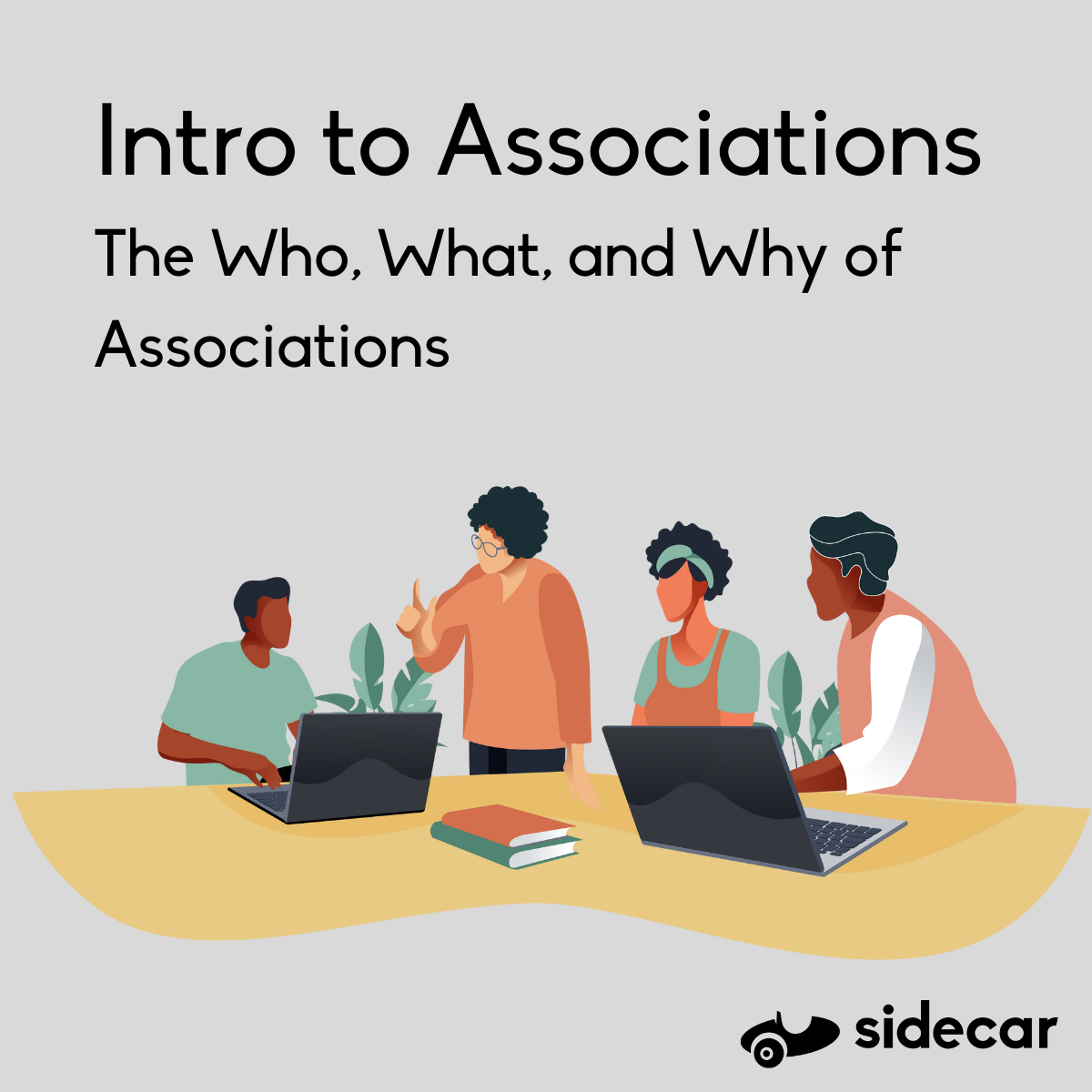So you just got a job at an association. Congratulations!
Joining a mission-focused organization can be a rewarding experience allowing you to truly make a difference and enact change for an industry or group of people. However, for folks just entering the association space, this can be an entirely new world with its own unique structure and methods.
To help you get started, we’ll be taking you through a series built for association newcomers. There’s a lot to learn and the best place to start is the beginning with one key question: What exactly is an association?
Defining an Association
The simplest way to think of an association is a group of people who have a common interest or a common set of needs. They are generally broken down into three categories:
- Professional – A group of people all in the same profession. They work to maintain standards within the industry and often control entry into these roles.
- Trade – Funded by businesses in a specific industry, trade associations are generally responsible for providing learning opportunities.
- Social – Formed by members with common interests or social backgrounds social associations focus on forming professional bonds.
In our next post, we dive deeper into the different types and their roles within an industry. However, the most important thing to note is that associations are large in number and can be found in just about any industry.
In 2009, there were over 1.9 million U.S.-based associations with roughly 1.2% of the private sector working within one. That means even the most niche industries and interests likely have an association to support them. Some examples include:
- The Association For Dressings & Sauces
- Association for Pet Obesity Prevention
- American Association of Candy Technologists
- Barbershop Harmony Society
Associations vs. Not-for-Profit Organizations
A common question when entering the association space is how are they different from a non-profit. While both are tax-exempt, associations typically fall under the 501(c)(6) designation for member-based organizations, but their classification in the tax code can change based on their structure and industry.
One big benefit of the non-profit tax status is transparency. Most organizations need to submit an IRS 990 form, which is a matter of public record and can be used by staffers to understand their organization and even ask for raises.
What Do Associations Do?
All associations need to add value either in the form of industry impact, member growth or community involvement. They accomplish this is by:
- Providing professional development and career training opportunities.
- Creating licensing and certifications, which are often required in certain professions.
- Establishing the standards or code of ethics for a particular industry.
- Working within a community and providing volunteer opportunities.
- Hosting events and creating networking opportunities both in-person and virtually.
As mentioned above, associations are member-focused, and many of their offerings come in the form of products or services. Whether that be a certification you need to advance your career or a training program to help you with your leadership skills, associations are there to help their members.
The More You Know
Of course, there is a lot more to it than just that. For those looking to get even more insights into the world of associations, be sure to join our Intro to Associations Course.

Intro to Associations
So you just got a job at an association. Congratulations! Joining a mission-focused organization can be a rewarding experience allowing you to truly make a difference and enact change for...
Download Now
And be sure to check back in. In our next post, we’ll be talking about the types of associations and how their focus impacts day-to-day operations.

January 30, 2022


